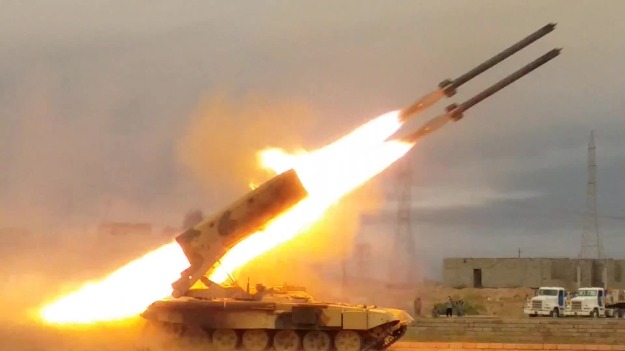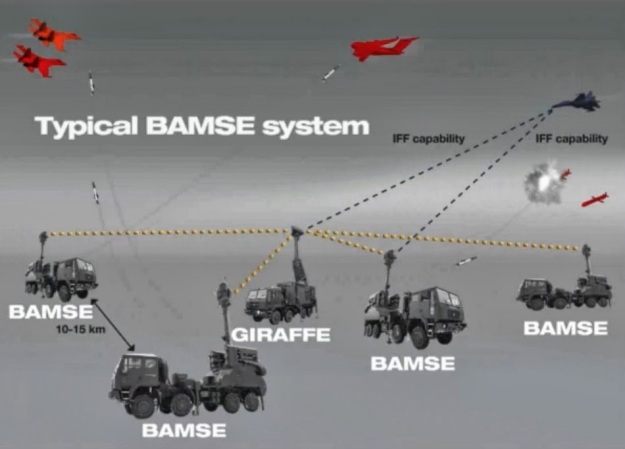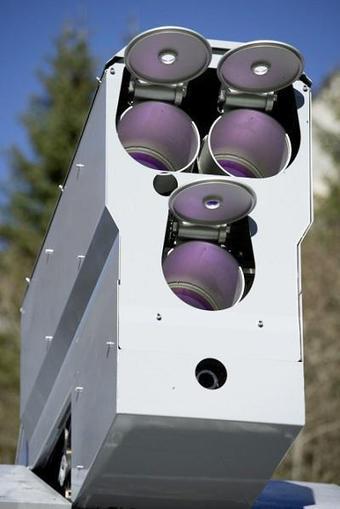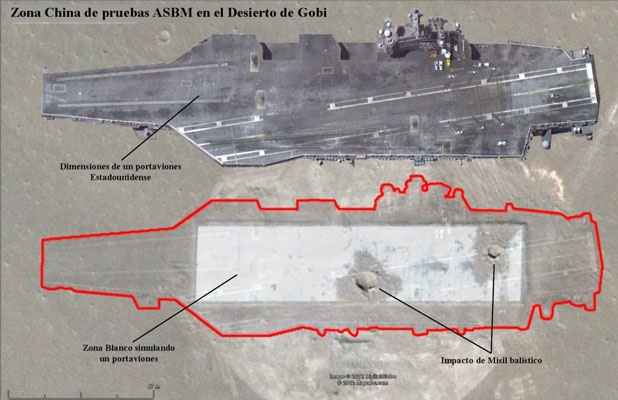The TOS-1A is the latest version of the original TOS-1 heavy flamethrower system. It was adopted by the Russian Army in 2001. The TOS-1A was used by the Russian Army in Chechnya. This heavy flamethrower system has been exported to Azerbaijan (18), Iraq (4) and Kazakhstan (3). Iraqi systems have seen combat during the fights with Islamic State fighters. It seems that the TOS-1A has also been exported to Syria, where it has seen combat during the Syrian Civil War.

Iraqi TOS-1A MLRS (Thermobaric) in action against ISIS
The TOS-1A heavy flamethrower system is intended for direct fire support of advancing infantry and main battle tanks, and moves in their combat orders. It is designed to engage military personnel, fortifications and light armored vehicles. The heavy flamethrower system is generally similar to multiple launch rocket systems, however it fires different types of rockets and has a shorter firing range.
The main element of the TOS-1A system is the BM-1 launch vehicle. A number of launching tubes was reduced from 30 to 24, arranged in three rows of eight tubes each. New launching tubes are longer in comparison with the previous heavy flamethrower system.
There are at least two types of 220-mm rockets. These are 3.3 and 3.7 m long and weight 173 and 217 kg respectively. The TOS-1A uses longer rockets and has a longer range than its predecessor. Maximum range of fire was increased to 6 000 m. Minimum range is 400 m.
MO.101.04, MO.1.01.04M rocket

PERFORMANCE
| Caliber, mm | 220 |
| Number
guide tubes, pieces |
24 |
| length of the guide tube, mm | 3725 |
| Range of fire: – Minimum – Maximum 6000 |
400 – 600 6000 |
| Lesion area open and located in open trenches manpower when firing at maximum range, m2 | Prior
40000 |
TZM-T reloading vehicle technical data tonnel-ufo.ru
There are at least two types of warheads – incendiary and thermobaric. The thermobaric weapons are also called vacuum or fuel-air explosives. This type of munitions releases a large cloud of flammable gas and causes massive explosions. It is used to clear out bunkers and other fortifications. The TOS-1A heavy flamethrower system launches a single rocket, or a pair of two rockets within 0.5 s. Full salvo duration is 12 and 6 seconds in automatic mode respectively.
The BM-1 launching vehicle has a crew of three, including commander, gunner and driver. It is fitted with a modern fire control system. All guidance and firing procedures are made from the inside of the vehicle, without exposing crew to enemy fire. The launcher vehicle is prepared for firing at a visible target within 90 seconds.

For self-digging, a bulldozer blade is mounted at the front of the vehicle. It allows to significantly shortening the time period equipping of the individual trench. This system is operated by the driver from inside the vehicle. To ensure insure fire accuracy the TOS-1A is equipped with two outriggers and hydraulic locks mounted at the rear of the chassis.

The fire control system is designed for target searching, measuring of the target range, measuring of inclination, launchers different from horizon, angle detection of the target position, estimation of the super-elevation angles of the rocking unit and side rotation of the launcher considering range, air temperatures, charge, air pressure, speed and direction of the wind at the active and passive areas of missile flight trajectory.
Modernization of heavy flamethrower system TOS-1A-based products ABAC-KTNTS (Engineering note)
At present JSC “Design Bureau of Transport Machinery” (Omsk) is a pioneer in the development of heavy flamethrower system (TOS) TOS-1A, “sun”, which is designed to provide fire support to infantry and tanks, the defeat of the enemy, open and covered fire positions in a variety of offensive and defensive combat, as well as the decommissioning of light armored vehicles and vehicles. The system includes a fighting machine BM-1. “sunshine” capable of hitting enemy targets at ranges from 3.6 to 6 kilometers (depending the type of missile).

Figure 1 — Option placing the article on the ABAC-KTNTS BM TOS-1A (object 634B).
Fighting vehicle BM-1 is a multiple launch rocket systems (MLRS) on tank chassis of T-72A. Fighting machine (BM) is used to place Nursi and start at designated targets.
BM-1 is equipped with a rotating platform with a swinging part in the form of a package of 24 tube guides for missiles with power servo drives and fire control system, placed on the chassis of a main battle tank T-72A. Guidance swinging of PU on the target in the horizontal and vertical planes produced power servo drives with a laser rangefinder and ballistic computer. The most important condition for maintaining the combat readiness of TOS-1A and ensure the effective management of its fire is the exact orientation of PU and Surveying binding.
The fire control system TOS-1A includes an optical sight, laser range finder periscope 1D14, tilt sensor, trim PB2.329.04 (electrical, Pendulum) and specialized electronic digital computer system with sensor equipment MO.1.01.01.03M2. A laser range finder distance to the target are determined with an accuracy of up to 10 m The data is automatically entered into the ballistic computer calculates the required elevation launcher. The angle of heel and trim package guides captured automatically and takes into account the calculator. TOS-1A incorporates the device orientation — giropolukompas HPA-59.

Figure 2 — The placement ISS products ABAC-KTNTS on BM TOS-1A
“NPO” Progress “offers a comprehensive solution to upgrade TOS-1A, and the use of the product ABAC-KTNTS comprising: a laser designator c to measure the distance to the target, up to 1.5 meters, forced a precision inertial measurement unit, which serves as high-precision topographic location with an accuracy of 0.7 PDE, gyrocompass and girokursoukazaetlya, navigation [1].
Product ABAC-KTNTS turns TOS-1A as an independent reconnaissance and strike complex. It should be noted that the adopted today in service of the Ministry of Defense of Russian mobile navigation systems and geodetic topoprivyazchiki have the precision parameters of PDE 2
The technical proposal relates to the fire control system, including the gyrocompass girokursoukazatelyam, orientation and stabilization systems PU.
The essence of the technical proposal is shown in Figures 1 and 2. The composition of the BM TOS-1A (object 634B) product introduced ABAC-KTNTS. To improve the accuracy and launch NURS TPU BM placed on inertial measurement unit (Figure 2), which also serves as for precision measurements BM azimuth, pitch and roll, and perform the function gyro, girokursoukazaetlya and navigator in the nomination of BM to the start position (SP).
Technical Proposal for placement on the ISS TPU BM-1 TOS-1A refers to methods for controlling vibrations of aiming launcher MLRS combat vehicles. The proposed technical solution, the measurement of the amplitude and frequency of vibration of aiming the weapon is carried out using high-precision built-in accelerometer inertial measurement unit (IMU) articles of ABAC-KTNTS. The measurement results are processed in the integrated unit TSBUN central computer in real time. Information about deviations of aiming device used for control intervals between shots, and the tension of the cable, or spring-torsional vibration isolators to change their stiffness in accordance with the specified characteristics of aiming in amplitude and frequency of oscillations as in the preparation of the shooting, and in managing the fluctuations in the process of aiming a volley MLRS. Technical Proposal “RPA” PROGRESS “automates the process of measuring and recording vibrations of aiming in real time.
Improving performance characteristics of TOS-1A is also due to improved fire control system. In fire-control system introduced inertial measurement unit that is connected to the central control unit and navigation, Doppler speed sensors, and optical sight used as a laser designator.
It should be noted that the ISS can be used to determine the gyro horizon, which is designed to measure the angles of the BM in the automated systems of stabilization funds and arms control volley fire. The technical result — increasing the efficiency of missile systems by eliminating the dynamic error gyrovertical during firing. In the conduct of shooting switching devices turn off the system and horizontal correction gyrovertical converted into the free gyro mode. To do this, O horizon sensors are connected to the input of the amplifier through a horizontal correction switching devices whose inputs are connected to the output of the control device, and its entrance — to the output of the driver.
Product ABAC-KTNTS provide strategic autonomy war machine (BM), BM increase vitality and reduce training time volley with an arbitrary starting position by an autonomous topogeodesic binding and orientation of MB standalone installation estimates of fire and flight plan data (EDM and DPZ), the coordinates of aiming points , bespritselnogo guidance package guides.
The system of independent orientation, according to the technical proposal “NPO Progress” is the initial azimuth and navigation equipment, built-in central control and navigation (TSBUN) — initial fighting machine TOS-1A. After which the navigation system TSBUN continuously determines the location and orientation of the BM, the system displayed on the electronic navigation map displayed on the color display of the display device. After receiving the targeting of the laser pointer, a block of reception and transmission of data, the system also displays the range to the target and the direction of the race at the starting position (SP). At the starting position inertial navigation unit product ABAC-KTNTS defines specified angles pointing to the current position of MB. The system continuously determines the error of their angles with the current guidance. Drive guidance on these disagreements exercise guidance package guides. After a volley of BM can make protivoognevoy maneuver and change the joint venture. Preparation of a new salvo is the same way.

Figure 3 — Parts ABAC-KTNTS
The laser pointer is used to measure distance to an object in a single measurement. The principle of operation of a laser range finder based on irradiation of the object stack of laser pulses and simultaneous accumulation of echoes, reflecting? Nnyh from the object. The number of laser pulses emitted in the stack and, consequently, accumulated echoes adaptively selected from 1 to 1024, depending on the reflectivity of the object, its size, weather conditions and distance to the object. Laser pulse repetition frequency of 5 kHz. Laser pointer has built a television camera, the lens of which is shared with at? Mnym channel rangefinder. Displayed on the display device in the form of a cross mark and the distance to the object. Image of the object and the underlying surface on the display items improved by image processing procedures.
Incorporated in the product ABAC-KTNTS technical solutions and software will greatly expand the functionality of the fire control system, stabilization, orientation and navigation TOS-1A, improve positioning accuracy for combat positions and reduce the available time for work that enhances the survivability BM TOS-1A . Translated by google – Source sdelanounas.ru

The TOS-1A launcher is mounted on a modified T-72A main battle tank chassis. Vehicle is powered by a V-84MS diesel engine, developing 840 hp. It is fitted with a self-entrenching blade. Armor protection of this system is similar to that of the T-72A MBT.
TOS-2 Tosochka Flamethrower Rocket Launcher
The TOS-2 is based on a Ural-63704-0010 military truck chassis. It has 18 launch tubes for 220 mm rockets. This rocket system is used to clear out buildings, bunkers and field fortifications using its thermobaric rockets.
The TOS-2 uses the same rockets as the previous systems. There are at least two types of 220 mm rockets. These are 3.3 and 3.7 m long and weight 173 and 217 kg respectively. Both of these rockets use the same 45 kg warhead. Maximum range of fire is around 6 km. Minimum range is around 400 m.
There are at least two types of warheads including incendiary and thermobaric. The thermobaric weapons are also called vacuum or fuel-air explosive weapon. This type of munitions releases a large cloud of flammable gas and causes massive explosions.
The cab is armored and provides protection for the crew against small arms fire and artillery shell splinters. However the TOS-2 can not match the previous TOS-1 and TOS-1A systems in terms of armor protection. The previous systems were based on a tank chassis and offered similar level of protection as main battle tanks. However the TOS-2 is more mobile and can rapidly self-deploy on roads over long distances.
 The launcher vehicle can stop and fire at a visible target within 90 seconds from traveling.
The launcher vehicle can stop and fire at a visible target within 90 seconds from traveling.
This artillery system is fitted with battlefield management system.
Vehicle has extended cab which accommodates the entire crew of around 5. All guidance and firing procedures are made from inside of the truck, without exposing the crew to enemy fire.
Vehicle is powered by a YaMZ-652 diesel engine, developing 440 hp. This vehicle can self-deploy on roads over long distances. The previous TOS-1 and TOS-1A systems required a tractor truck with a semi-trailer in order to relocate over significant distances. Though the TOS-2 looses to tracked systems in terms of off-road mobility.
The TOS-2 is fitted with hydraulic crane, which is used to reload rockets. This system can pick and load rockets from the ground, or from escorting resupply truck. Hence there is no need for a dedicated reloading vehicle. This also reduces procurement and operating costs. Source military-today.com
V-84MS diesel engine
| Specifications: | |
|---|---|
| Property | Value |
| Engine power output (h.p.) |
840
|
| Rated speed (r.p.m.) |
2000
|
| Fuel consuption (g/h.p.h) |
182
|
| Length (mm) |
1480
|
| Height (mm) |
896
|
| Width (mm) |
902
|
| Weight (kg) |
1020
|
Source army-guide.com
TZM-T reloading vehicle This heavy flamethrower is supported by a new TZM-T reloading vehicle, which is used to transport and reload rockets. It carries a full set of reload rockets in two pods for 12 rockets each. A crane is mounted between these units. Reloading vehicle also carries 400 liters of fuel for the BM-1 launch vehicle. The TZM-T is operated by a crew of three.
| Freight loader TZM-T | |
| Weight TLV-T kit Nursi, t | 39 |
| Average ground pressure, MPa (kgf/cm2) | 0,079 (0,79) |
| main dimensions: – Length – Width on removable flaps – Height – On the main bottom clearance |
7000 3580 3050 477 |
| speed (maximum on the highway), km / h | 60 |
| Cruising range, km | 550 |
| Number
vozimykh for MB-1 ammunition, items |
24 |
| Ammunition supply of fuel for the BM-1, n | 400 |
| Obstacles: – Maximum lift, hail, – The maximum angle of heel deg. – Width of the trench, m – Wall height, m – The depth of the ford, m |
30 25 2,6-2,8 0,85 1,2 |
TZM-T reloading vehicle technical data tonnel-ufo.ru
Also recently appeared a reloading vehicle, based on KamAZ-6350 8×8 truck. It also carries two pods of reload rockets with a crane mounted in between.
| Entered service | 2001 |
| Crew | 3 men |
| Dimensions and weight | |
| Weight | 44.3 t |
| Length | 7.24 m |
| Width | 3.58 m |
| Height | 3.07 m |
| Armament | |
| Caliber | 220-mm |
| Number of tubes | 24 |
| Rocket weight | 173 or 217 kg |
| Warhead weight | 45 kg |
| Firing range | 0.4 – 6 km |
| Full salvo duration | 6 / 12 s |
| Reloading time | ? |
| Mobility | |
| Engine | V-84MS diesel |
| Engine power | 840 hp |
| Maximum road speed | 60 km/h |
| Range | 550 km |
| Maneuverability | |
| Gradient | 60% |
| Side slope | 40% |
| Vertical step | 0.85 m |
| Trench | 2.6 – 2.8 m |
| Fording | 1.2 m |
Source: military-today.com/forum.tanktastic.org/army-guide.com
Images are from pubic domain unless otherwise stated
Main image Vladimir Astapkovich
Updated May 29, 2022

























 The Saab BAMSE SR-SAM On Ashok Leyland Truck
The Saab BAMSE SR-SAM On Ashok Leyland Truck





 Source: saab.com/land/weapon-systems/conworld.wikia.com
Source: saab.com/land/weapon-systems/conworld.wikia.com





 The Oerlikon High Energy Laser (HEL) Gun showcased by Reinmetall at IDEX 2015
The Oerlikon High Energy Laser (HEL) Gun showcased by Reinmetall at IDEX 2015













